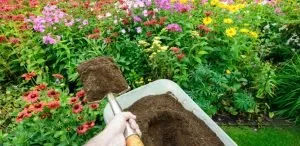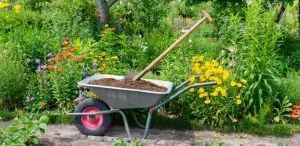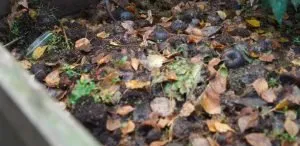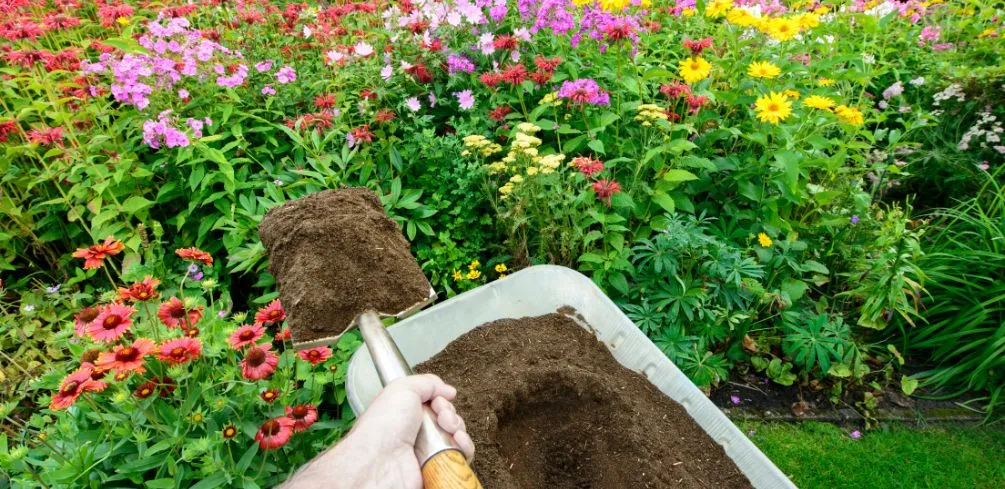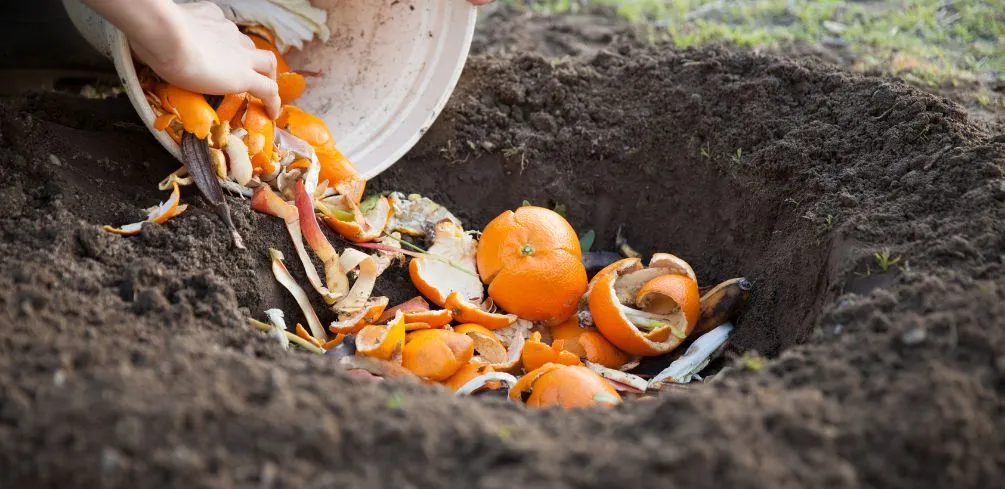Composting is the process of decomposing organic matter into a nutrient-rich soil amendment. This practice has been used for centuries to improve soil health and increase crop yields in agriculture.
However, composting is not just limited to large-scale farming operations. In recent years, there has been a growing interest in using compost as an essential component of landscaping.
Compost can be used in various ways in landscaping, including soil amendment, mulch, or topsoil replacement. Adding compost to the soil can improve its structure and water-holding capacity while reducing erosion and runoff.
Compost also provides plants essential nutrients, leading to healthier growth and increased resistance to pests and diseases. Additionally, using compost instead of synthetic fertilizers can reduce the risk of chemical leaching into groundwater sources.
This article will explore the benefits of incorporating compost into landscaping practices and discuss how it can contribute to sustainable land management.
The Benefits Of Using Compost In Landscaping
Like the soil that nourishes our plants, compost is vital to any healthy garden. Composting methods have been used for centuries, but they have only recently gained popularity in modern landscaping practices.
Composting involves the decomposition of organic materials such as food waste, leaves, and grass clippings. These materials are broken down by bacteria and fungi to create a nutrient-rich fertilizer that can be used to enhance soil health and promote plant growth.
Despite its numerous benefits, there are still many misconceptions surrounding composting. Some people believe it is a smelly and unsanitary practice, while others view it as too time-consuming or difficult to implement in their gardens.
However, with the right techniques and tools, composting can be a simple and effective way to improve soil quality while reducing waste.
By incorporating compost into your landscaping routine, you can reap the rewards of healthier plants, better drainage, and increased water retention – all while doing your part to promote sustainable living practices.
Compost As A Soil Amendment
The Benefits of Using Compost in Landscaping have been discussed in detail, highlighting how it can improve soil structure and nutrient content. However, compost is not just a beneficial additive to soil; it can also be used as a soil amendment.
In this section, we will explore the composting process and how it can be used to amend the soil for optimal plant growth.
Composting involves breaking down organic matter into a nutrient-rich substance that can be added back into the soil. This process occurs naturally in nature; however, humans have taken this process and optimized it for their benefit.
Composting requires the right balance of carbon and nitrogen-rich materials to facilitate the breakdown of organic matter. Once fully decomposed, the resulting compost can be mixed into garden beds or used as a top dressing for lawns.
Compost tea, created by steeping compost in water, can also be used as a liquid fertilizer. Overall, using compost as a soil amendment is eco-friendly to provide plants with essential nutrients while improving overall soil health.
Compost As Mulch And Topsoil Replacement
Compost can also be used as mulch and topsoil replacement.
Mulching with compost has many benefits for soil health, such as improving soil structure, increasing microbial activity, and reducing erosion. It also helps retain moisture in the soil by acting as a barrier against evaporation.
Compost mulch can be applied around plants and trees to suppress weeds, regulate soil temperature, and add nutrients.
Replacing topsoil with compost is another way to improve soil health. Topsoil provides a fertile layer of soil for plants to grow in but can become depleted over time. Adding compost to the top layer of soil can help replenish nutrients and improve its structure.
This method is handy in areas where topsoil has been removed or eroded due to development or other factors. By using compost as a replacement for topsoil, gardeners can create healthier soils more conducive to plant growth while benefiting the environment through reduced waste and improved moisture retention.
By incorporating compost into landscaping practices as mulch and topsoil replacement, gardeners can improve their soil health, reduce waste, and conserve water through increased moisture retention.
Nutrient Benefits Of Compost For Plants
Composting is a natural and sustainable process of recycling organic materials into nutrient-rich soil amendments that can benefit plants in many ways. Compost contains essential nutrients like nitrogen, phosphorus, potassium, and trace elements that are important for plant growth and development.
These nutrients are released slowly over time, providing a steady supply of nourishment to plants without the risk of nutrient leaching or runoff. The benefits of composting for plants can be maximized by using effective composting techniques and applying compost through various methods.
Composting techniques include hot, cold, vermicomposting, and aerobic or anaerobic digestion. Hot composting involves creating high temperatures (around 140°F) through rapid decomposition using frequent turning and monitoring.
Cold composting is a slower process that relies on natural decomposition with little intervention. Vermicomposting uses worms to break down organic materials quickly into nutrient-rich worm castings.
Aerobic and anaerobic digestion use microorganisms to decompose organic waste in the presence or absence of oxygen, respectively. Compost application methods include top-dressing, side-dressing, trenching, mulching, and seed-starting mixes.
These methods can improve soil structure, retain moisture, suppress weeds, increase soil fertility, reduce erosion, and promote healthy plant growth.
Sustainable Land Management With Compost
Composting is a natural process that breaks down organic materials into nutrient-rich soil. It is essential to sustainable land management because it reduces waste, conserves resources, and improves soil health.
Various composting methods are available, including aerobic, anaerobic, vermicomposting, and bokashi composting. Each method requires different composting materials, such as food scraps, yard waste, manure, and paper products. By utilizing these materials to create compost, we can reduce the amount of waste in landfills while producing a valuable resource for landscaping.
When using compost in landscaping, several benefits can be observed. Using compost helps improve soil structure and water retention capacity while reducing erosion and nutrient runoff. Additionally, it provides nutrients for plants without using chemical fertilizers that can harm the environment.
By incorporating sustainable practices like composting into land management systems, we can create healthier ecosystems that support biodiversity and promote long-term sustainability.
Incorporating best practices for sustainable land management with compost is critical in addressing environmental challenges such as climate change and resource depletion. Proper selection of composting methods and materials coupled with application techniques in landscaping practices will lead to healthy soil structures and improved crop yields which benefit not only farmers but consumers who rely on locally grown produce.
Frequently Asked Questions
What Is The Best Method For Starting A Compost Pile?
Starting a compost pile can be daunting, but with the right tools and optimal composting conditions, it can yield great results. Composting tools such as pitchforks, shovels, and compost bins can aid in the process of breaking down organic matter into nutrient-rich soil.
Optimal composting conditions include a balance of carbon-rich materials like leaves and grass clippings combined with nitrogen-rich materials such as food scraps and manure. The right amount of moisture and oxygen is also necessary for the decomposition process to occur efficiently.
By following these guidelines, one can create a successful compost pile that will benefit both the environment and the garden.
Can All Types Of Organic Waste Be Added To A Compost Pile?
Composting materials are crucial in maintaining a healthy and productive compost pile. However, not all types of organic waste can be added to the pile.
Composting mistakes such as adding meat, dairy, or oily foods can lead to unpleasant odors and attract vermin. On the other hand, materials like fruit and vegetable scraps, leaves, grass clippings, and coffee grounds are excellent additions to a compost pile.
Maintaining a balance between green (nitrogen-rich) and brown (carbon-rich) materials is important for optimum results. By carefully selecting appropriate composting materials and avoiding common mistakes, one can create nutrient-rich soil ideal for landscaping projects.
How Long Does It Take For Compost To Be Ready For Use In Landscaping?
Composting is an effective and sustainable way to manage organic waste. The composting timeline varies depending on the type of waste, composting technique, and environmental conditions.
Generally, it can take a few weeks to several months for compost to be ready for use in landscaping.
Techniques such as shredding or chopping materials into smaller pieces, turning the pile frequently to aerate it, and maintaining proper moisture levels can be employed to speed up the process.
However, it is important to note that rushing the composting process may result in an unfinished product that could harm plants or even attract pests. Patience and attention to detail are key when creating high-quality compost for use in landscaping.
Can Compost Be Used In Hydroponic Or Indoor Gardening?
Composting benefits extend beyond outdoor gardening, as compost can be used in indoor gardening and hydroponic systems. Indoor composting techniques vary, but common methods include vermicomposting or using a sealed container with an odor-absorbing filter.
Composting provides a nutrient-rich soil amendment that can enhance plant growth and reduce the need for synthetic fertilizers. Additionally, indoor composting can be a sustainable way to reduce waste and contribute to a circular economy by repurposing organic materials.
By exploring the various ways to incorporate compost into indoor gardening practices, individuals can reap the benefits of composting while reducing their environmental impact.
Are There Any Potential Risks To Using Compost In Landscaping?
When using compost in landscaping, it is essential to consider the potential risks and downsides. For instance, composting regulations must be followed to ensure that the compost is safe for use.
Moreover, while compost is generally considered a better alternative to chemical fertilizers because it is organic and sustainable, it may not always be the best option depending on the specific needs of your landscape.
However, one should also consider the numerous benefits of using compost, such as improving soil structure and promoting healthy plant growth.
Ultimately, proper research and consideration of all factors involved can help ensure that using compost in landscaping is safe and effective.
Conclusion
Composting is an excellent way to reduce the amount of organic waste produced while creating a nutrient-rich soil amendment for landscaping purposes. The best method for starting a compost pile involves layering brown and green materials, keeping it moist, turning it occasionally, and allowing decomposition time.
However, not all types of organic waste can be added to a compost pile, as some may contain harmful chemicals or pathogens. The time required for compost to be ready varies depending on many factors, such as temperature and moisture levels.
Compost can also be used in hydroponic or indoor gardening applications as long as it is properly prepared. While there are potential risks associated with using compost in landscaping, proper preparation and handling techniques can mitigate these risks.
Anecdotal evidence suggests that using compost in landscaping is like feeding the earth. Just as we must nourish our bodies with healthy foods, plants need nutritious soil to flourish.
By utilizing composted organic matter in our landscapes, we provide the essential nutrients necessary for growth while reducing waste disposal and promoting sustainability. With proper preparation and attention to detail, incorporating compost into your landscaping routine can provide numerous benefits for both you and the environment.

